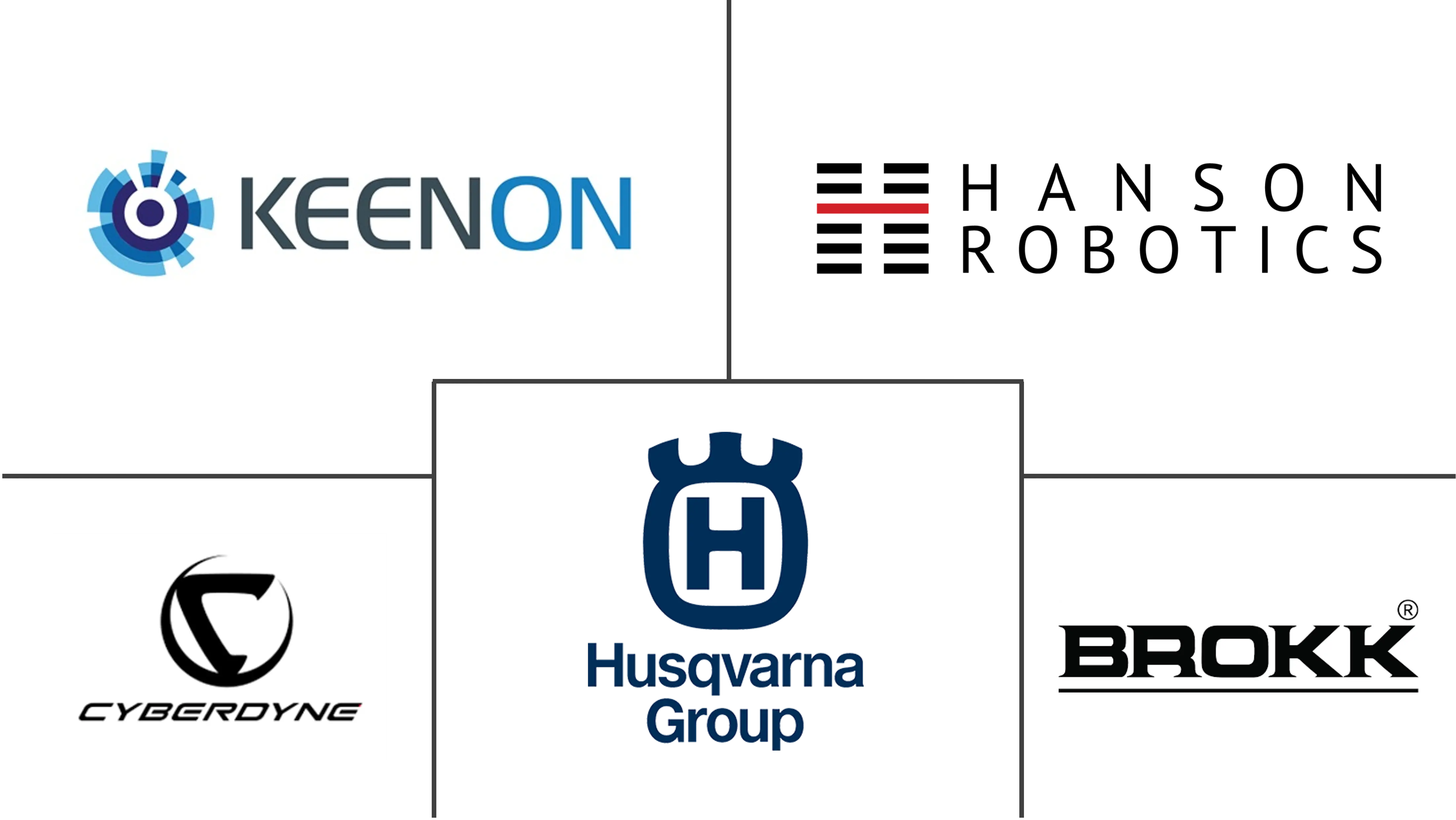Market Size of Professional Service Robots Industry Size And Share Analysis

| Study Period | 2019 - 2029 |
| Market Size (2024) | USD 53.30 Billion |
| Market Size (2029) | USD 109.20 Billion |
| CAGR (2024 - 2029) | 15.40 % |
| Fastest Growing Market | Asia Pacific |
| Largest Market | Europe |
| Market Concentration | Medium |
Major Players
*Disclaimer: Major Players sorted in no particular order |
Professional Service Robots Market Analysis
The Professional Service Robots Market Size & Share Market size is estimated at USD 53.30 billion in 2024, and is expected to reach USD 109.20 billion by 2029, growing at a CAGR of 15.40% during the forecast period (2024-2029).
- Professional robots encompass a variety of categories, including field robots, defense and security robots, medical assisting robots (MAR), public assistant robots, electrical industry robots, and robots for construction purposes. The growing adoption of digital technologies and automation solutions in these industries is fueling the demand for professional robots.
- Professional robots are commonly utilized in various primary industries such as transportation, hospitality, medical, professional cleaning, and agriculture. In 2023, transportation emerged as a prominent sector for the use of professional robots. As per the International Federation of Robotics (IFR), the United States led in the number of professional service robot manufacturers in 2023, surpassing China and Germany. Also, countries like the United States are experiencing a rise in robotics startups that are starting to compete with established industry players.
- However, these service robots have been widely embraced by these industries due to their ability to provide high-quality services, improved ease of use, reliability, and cost savings by reducing human errors. Additionally, the industry is currently undergoing a technological revolution that is enhancing the capabilities of professional service robots due to advancements in machine learning, adaptive computing, vision systems, and artificial intelligence (AI).
- The advancements in 5G technology and AI chipsets are anticipated to play a crucial role in driving growth in the professional service robotics market in the future. Connectivity is a crucial factor in the deployment of robots, especially for mobile service robots operating in industrial settings where reliable connections can be challenging to maintain. The improved reliability, reduced latency, and increased connection densities offered by 5G technology can effectively address this issue.
- In addition to this, the integration of automation and mobility in various industrial sectors is contributing significantly to the overall market growth. Moreover, the market is bolstered by factors such as escalating labor expenses, growing investments in research and development, a shortage of skilled workers, and heightened awareness of service robots and industrial automation.
- However, the initial capital investment for professional service robots is quite considerable. This large investment may not be feasible for small and medium-sized businesses, leading them to opt for manual labor instead. Additionally, these robots require regular repair and maintenance, which adds to the overall cost. Therefore, the high capital investment and operational expenses are likely to pose challenges to the growth of the global professional service robots market in the foreseeable future.

